
|
You entered: Saturn
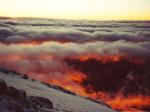 Sunrise Over Kilimanjaro
Sunrise Over Kilimanjaro
11.07.2005
Is the Roof of Africa on fire? A group hiking at 6 am near the top of Mt. Kilimanjaro watched the rising sun peak above the clouds and the horizon light up red. Don't worry -- in this case the highest volcano in Africa is not even erupting.
 Planet Earth at Night II
Planet Earth at Night II
17.06.2023
Recorded during 2017, timelapse sequences from the International Space Station are compiled in this serene video of planet Earth at Night. Fans of low Earth orbit can start by enjoying the view as green and red aurora borealis slather up the sky.
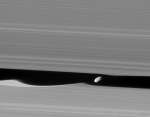 Daphnis the Wavemaker
Daphnis the Wavemaker
21.01.2017
Plunging close to the outer edges of Saturn's rings, on January 16 the Cassini spacecraft captured this closest yet view of Daphnis. About 8 kilometers across and orbiting within the bright ring system's Keeler gap, the small moon is making waves.
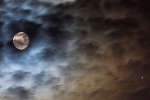 Moons Near Jupiter
Moons Near Jupiter
23.05.2019
On May 20, a nearly Full Moon and Jupiter shared this telephoto field of view. Captured when a passing cloud bank dimmed the moonlight, the single exposure reveals the familiar face of our fair planet's own large natural satellite, along with bright Jupiter (lower right) and some of its Galilean moons.
 Big Dipper to Southern Cross
Big Dipper to Southern Cross
31.03.2016
Welcome to an equatorial night. This remarkable 24 frame night skyscape was captured from Maba Beach on the Indonesian island of Halmahera during the evening of March 4. Seen from a mere 0.7 degrees northern latitude, both famous northern and southern asterisms and navigational aids lie within the panoramic view.
 The Last Moon Shot
The Last Moon Shot
4.05.1997
In 1865 Jules Verne predicted the invention of a space capsule that could carry people. In his science fiction story "From the Earth to the Moon", he outlined his vision of a cannon in Florida so powerful that it could shoot a "Projectile-Vehicle" carrying three adventurers to the Moon.
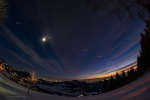 Planetary Alignment over Italy
Planetary Alignment over Italy
19.12.2021
It is not a coincidence that planets line up. That's because all of the planets orbit the Sun in (nearly) a single sheet called the plane of the ecliptic. When viewed from inside that plane -- as Earth dwellers are likely to do -- the planets all appear confined to a single band.
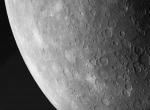 Southwest Mercury
Southwest Mercury
13.02.2000
The planet Mercury resembles a moon. Mercury's old surface is heavily cratered like many moons. Mercury is larger than most moons but smaller than Jupiter's moon Ganymede and Saturn's moon Titan. Mercury is much denser and more massive than any moon, though, because it is made mostly of iron.
 Phoebe Craters in Stereo
Phoebe Craters in Stereo
10.07.2004
Get out your red/blue glasses and gaze across the spectacular, cratered terrain of Saturn's icy moon Phoebe in stereo. The dramatic 3-D perspective spans roughly 50 kilometers and is based...
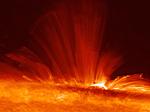 An Active Sunspot Viewed Sideways
An Active Sunspot Viewed Sideways
2.04.2007
Why are there dark spots on the sun? Although noted for thousands of years, sunspots have been known for decades to be regions of the Sun that are slightly depressed and cooled by the Sun's complex and changing magnetic field.
|
January February March April May June July |
|||||||||||||||||||||||||||||||||||||||||||||||||